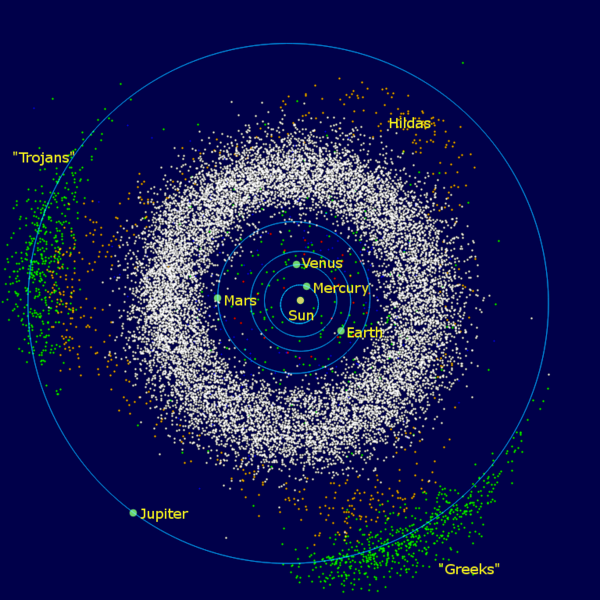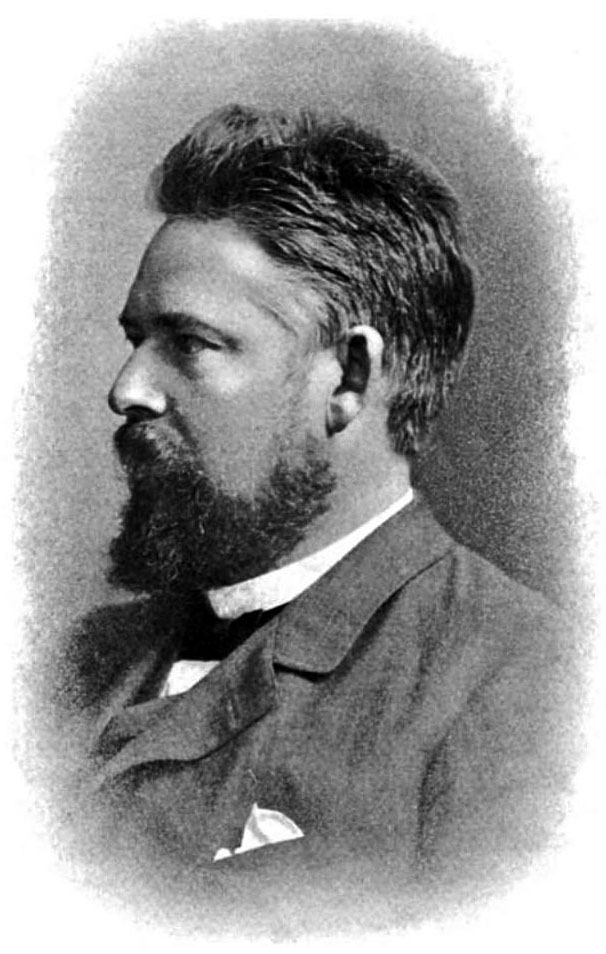|
Greek Camp
This is a list of Jupiter trojans that lie in the Greek camp, an elongated curved region around the leading Lagrangian point (), 60 ° ahead of Jupiter in its orbit. All the asteroids at Jupiter's point have names corresponding to participants on the Greek side of the Trojan War, except for 624 Hektor, which was named before this naming convention was instituted. Correspondingly, 617 Patroclus is a Greek-named asteroid at the "Trojan" () Lagrangian point. In 2018, at its 30th General Assembly in Vienna, the International Astronomical Union amended this naming convention, allowing Jupiter trojans with an '' H'' larger than 12 (that is, a mean diameter smaller than approximately 22 kilometers, for an assumed albedo of 0.057) to be named after Olympic athletes, as the number of known Jupiter trojans, currently more than 10,000, far exceeds the number of available names of heroes from the Trojan War in Greek mythology. Trojans in the Greek and Trojan camp are discovered mainly in ... [...More Info...] [...Related Items...] OR: [Wikipedia] [Google] [Baidu] |
Mean Diameter
In applied sciences, the equivalent radius (or mean radius) is the radius of a circle or sphere with the same perimeter, area, or volume of a non-circular or non-spherical object. The equivalent diameter (or mean diameter) (D) is twice the equivalent radius. Perimeter equivalent The perimeter of a circle of radius ''R'' is 2 \pi R. Given the perimeter of a non-circular object ''P'', one can calculate its perimeter-equivalent radius by setting :P = 2\pi R_\text or, alternatively: :R_\text = \frac For example, a square of side ''L'' has a perimeter of 4L. Setting that perimeter to be equal to that of a circle imply that :R_\text = \frac \approx 0.6366 L Applications: * US hat size is the circumference of the head, measured in inches, divided by pi, rounded to the nearest 1/8 inch. This corresponds to the 1D mean diameter. *Diameter at breast height is the circumference of tree trunk, measured at height of 4.5 feet, divided by pi. This corresponds to the 1D mean diameter. It c ... [...More Info...] [...Related Items...] OR: [Wikipedia] [Google] [Baidu] |
Jupiter Trojans (Greek Camp)
The Jupiter trojans, commonly called trojan asteroids or simply trojans, are a large group of asteroids that share the planet Jupiter's orbit around the Sun. Relative to Jupiter, each trojan librates around one of Jupiter's stable Lagrange points: either ', existing 60° ahead of the planet in its orbit, or ', 60° behind. Jupiter trojans are distributed in two elongated, curved regions around these Lagrangian points with an average semi-major axis of about 5.2 AU. The first Jupiter trojan discovered, 588 Achilles, was spotted in 1906 by German astronomer Max Wolf. More than 9,800 Jupiter trojans have been found . By convention, they are each named from Greek mythology after a figure of the Trojan War, hence the name "trojan". The total number of Jupiter trojans larger than 1 km in diameter is believed to be about , approximately equal to the number of asteroids larger than 1 km in the asteroid belt. Like main-belt asteroids, Jupiter trojans form families. , ma ... [...More Info...] [...Related Items...] OR: [Wikipedia] [Google] [Baidu] |
Minor Planet Electronic Circular
The Minor Planet Center (MPC) is the official body for observing and reporting on minor planets under the auspices of the International Astronomical Union (IAU). Founded in 1947, it operates at the Smithsonian Astrophysical Observatory. Function The Minor Planet Center is the official worldwide organization in charge of collecting observational data for minor planets (such as asteroids), calculating their orbits and publishing this information via the ''Minor Planet Circulars''. Under the auspices of the International Astronomical Union (IAU), it operates at the Smithsonian Astrophysical Observatory, which is part of the Center for Astrophysics along with the Harvard College Observatory. The MPC runs a number of free online services for observers to assist them in observing minor planets and comets. The complete catalogue of minor planet orbits (sometimes referred to as the "Minor Planet Catalogue") may also be freely downloaded. In addition to astrometric data, the MPC collect ... [...More Info...] [...Related Items...] OR: [Wikipedia] [Google] [Baidu] |
Minor Planet Center
The Minor Planet Center (MPC) is the official body for observing and reporting on minor planets under the auspices of the International Astronomical Union (IAU). Founded in 1947, it operates at the Smithsonian Astrophysical Observatory. Function The Minor Planet Center is the official worldwide organization in charge of collecting observational data for minor planets (such as asteroids), calculating their orbits and publishing this information via the '' Minor Planet Circulars''. Under the auspices of the International Astronomical Union (IAU), it operates at the Smithsonian Astrophysical Observatory, which is part of the Center for Astrophysics along with the Harvard College Observatory. The MPC runs a number of free online services for observers to assist them in observing minor planets and comets. The complete catalogue of minor planet orbits (sometimes referred to as the "Minor Planet Catalogue") may also be freely downloaded. In addition to astrometric data, the ... [...More Info...] [...Related Items...] OR: [Wikipedia] [Google] [Baidu] |
List Of Jupiter Trojans (Trojan Camp)
This is a list of Jupiter trojans that lie in the Trojan camp, an elongated curved region around the trailing Lagrangian point, 60° behind Jupiter in its orbit. All the asteroids at the trailing point have names corresponding to participants on the Trojan side of the Trojan War, except for 617 Patroclus, which was named before this naming convention was instituted. Correspondingly, 624 Hektor is a Trojan-named asteroid at the "Greek" () Lagrangian point. In 2018, at its 30th General Assembly in Vienna, the International Astronomical Union amended this naming convention, allowing for Jupiter trojans with '' H'' larger than 12 (that is, a mean diameter smaller than approximately 22 kilometers, for an assumed albedo of 0.057) to be named after Olympic athletes, as the number of known Jupiter trojans, currently more than 10,000, far exceeds the number of available names of heroes from the Trojan War in Greek mythology Greek mythology is the body of myths originally told by ... [...More Info...] [...Related Items...] OR: [Wikipedia] [Google] [Baidu] |
Greek Mythology
Greek mythology is the body of myths originally told by the Ancient Greece, ancient Greeks, and a genre of ancient Greek folklore, today absorbed alongside Roman mythology into the broader designation of classical mythology. These stories concern the ancient Greek religion's view of the Cosmogony, origin and Cosmology#Metaphysical cosmology, nature of the world; the lives and activities of List of Greek deities, deities, Greek hero cult, heroes, and List of Greek mythological creatures, mythological creatures; and the origins and significance of the ancient Greeks' cult (religious practice), cult and ritual practices. Modern scholars study the myths to shed light on the religious and political institutions of ancient Greece, and to better understand the nature of mythmaking itself. The Greek myths were initially propagated in an oral tradition, oral-poetic tradition most likely by Minoan civilization, Minoan and Mycenaean Greece, Mycenaean singers starting in the 18th century&n ... [...More Info...] [...Related Items...] OR: [Wikipedia] [Google] [Baidu] |
Jupiter Trojan
The Jupiter trojans, commonly called trojan asteroids or simply trojans, are a large group of asteroids that share the planet Jupiter's orbit around the Sun. Relative to Jupiter, each Trojan (celestial body), trojan Libration point orbit, librates around one of Jupiter's stable Lagrangian point, Lagrange points: either ', existing 60° ahead of the planet in its orbit, or ', 60° behind. Jupiter trojans are distributed in two elongated, curved regions around these Lagrangian points with an average semi-major axis of about 5.2 Astronomical unit, AU. The first Jupiter trojan discovered, 588 Achilles, was spotted in 1906 by German astronomer Max Wolf. More than 9,800 Jupiter trojans have been found . By convention, they are each named from Greek mythology after a figure of the Trojan War, hence the name "trojan". The total number of Jupiter trojans larger than 1 km in diameter is believed to be about , approximately equal to the number of asteroids larger than 1 km in ... [...More Info...] [...Related Items...] OR: [Wikipedia] [Google] [Baidu] |
International Astronomical Union
The International Astronomical Union (IAU; , UAI) is an international non-governmental organization (INGO) with the objective of advancing astronomy in all aspects, including promoting astronomical research, outreach, education, and development through global cooperation. It was founded on 28 July 1919 in Brussels, Belgium and is based in Paris, France. The IAU is composed of individual members, who include both professional astronomers and junior scientists, and national members, such as professional associations, national societies, or academic institutions. Individual members are organised into divisions, committees, and working groups centered on particular subdisciplines, subjects, or initiatives. the Union had 85 national members and 12,734 individual members, spanning 90 countries and territories. Among the key activities of the IAU is serving as a forum for scientific conferences. It sponsors nine annual symposia and holds a triannual General Assembly that sets policy ... [...More Info...] [...Related Items...] OR: [Wikipedia] [Google] [Baidu] |
617 Patroclus
617 Patroclus ( ) is a large binary Jupiter trojan asteroid. It is a dark D-type asteroid and a List of slow rotators (minor planets), slow rotator, due to the 103-hour orbital period of its two components. It is one of five Jupiter trojan asteroids targeted by the ''Lucy (spacecraft), Lucy'' space probe, and is scheduled for a flyby (spaceflight), flyby in 2033. Patroclus was discovered on 17 October 1906, by astronomer August Kopff at the Heidelberg Observatory in Germany, and was named after Patroclus in Greek mythology. It was the second trojan to be discovered and the only member of the Trojan camp named after a Greek figure, as the convention of naming one 'camp' after Greek figures of the Trojan War and the other after Trojan figures had not yet been established. Patroclus was long thought to be one of the 617 Patroclus#Diameter and albedo, largest Jupiter trojans, with a diameter on the order of 150 km. However, in 2001 it was discovered to be a binary asteroid of t ... [...More Info...] [...Related Items...] OR: [Wikipedia] [Google] [Baidu] |



